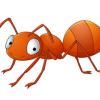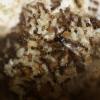I have a small heat pad non adhesive under half a a ants Canada omni nest small housing a sizable Pogonomyrmex c colony. Do I even need this. The heat pad is under screws, not the acrylic, because it can't touch plastic. Condensation is visible, is this okay?. Can I leave this on all the time? Is there a Safety risk to me or the ants?
Thanks
- Formiculture.com
- Forums
- Gallery
- Members
- Member Map
- Chat
















